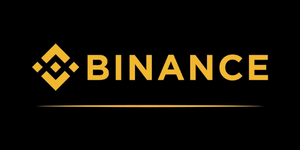-
Bitcoin Price: $67,901
2.58%
-
All-Time High: $73,738.00
7.88%
- 24h High / 24h Low: $68,223 / $65,911
-
Market Cap: $1,339,865,562,722
2.81%
- 24h Volume: $29,033,154,684
Explained: Bitcoin Halving as a deflationary mechanism

Source: Freepik.com
The Bitcoin code specifies that the reward for validated Bitcoin transactions is halved every 210,000 blocks. How does halving work and why is it useful at all?
Gradual distribution of newly mined Bitcoins
The Bitcoin halving is a recurring event in which the reward provided for newly mined Bitcoin blocks is halved. As an essential function of the Bitcoin protocol, the recurring Bitcoin halving contributes to a gradual distribution of newly mined Bitcoins and ensures that the creation of new Bitcoins follows a predictable decline rate. In other words halving is a deflationary mechanism to reduce the circulating supply of a cryptocurrency and to increase shortage.
History of Bitcoin Halvings
The initial reward at the start of the Bitcoin payment network was 50 Bitcoin. The first Bitcoin halving took place on November 28, 2012 and the block rewards were reduced to 25 Bitcoin. On July 9, 2016 the block rewards were reduced to 12.5 Bitcoin during the second Bitcoin halving. The third Bitcoin halving occurred on May 11, 2020. The current Bitcoin block reward is 6.25 Bitcoin.
There's less than 100,000 blocks until the next #Bitcoin halving.
— Bitcoin Magazine (@BitcoinMagazine) June 9, 2022
BTC is going to get even more scarce 🚀
The next Bitcoin halving (fourth halving) will take place at block 840,000 and the Bitcoin block rewards will be slashed to 3.125 Bitcoin. It is estimated that the next halving will take place in spring 2024. For detailed information on the next halving date check our Bitcoin halving countdown.
Limited vs. unlimited supply
The Bitcoin halving is an essential element of the Bitcoin payment network, as it ensures that new Bitcoins are issued gradually, with a maximum supply of 21 million. With this controlled monetary inflation rate, Bitcoin stands diametrically opposed to traditional fiat currencies such as the U.S. dollar or the Euro, which typically have an unlimited supply.
Disclaimer
This article does not provide investment advice. Historical cryptocurrency data is not a guarantee of future market developments. The author may hold several of the cryptocurrencies mentioned in this article.
Read more About
THIS WEEK’S
Trending Posts
-
 May 24, 2023
May 24, 2023Bitcoin and the Environment: Debunking the Myths
-
 February 2, 2023
February 2, 2023Explained: Advantages & Disadvantages of KYC
-
 January 24, 2023
January 24, 2023Ethereum successfully launches Shadow Fork in preparation for upcoming Shanghai Hard Fork
-
 January 11, 2023
January 11, 2023Assets worth $5 billion in cash and cryptocurrency seized from FTX
-
 December 19, 2022
December 19, 2022Stablecoins: The future of digital currency?
SPREAD THE WORD
Share this Post
HAND-PICKED
Curated Cryptocurrency Posts
-
 May 24, 2023
May 24, 2023Bitcoin and the Environment: Debunking the Myths
-
 February 2, 2023
February 2, 2023Explained: Advantages & Disadvantages of KYC
-
 January 24, 2023
January 24, 2023Ethereum successfully launches Shadow Fork in preparation for upcoming Shanghai Hard Fork
-
 January 11, 2023
January 11, 2023Assets worth $5 billion in cash and cryptocurrency seized from FTX
Didn't find the answer you were looking for?
Feel free to check our cryptocurrency market data or our comprehensive blockchain glossary.















